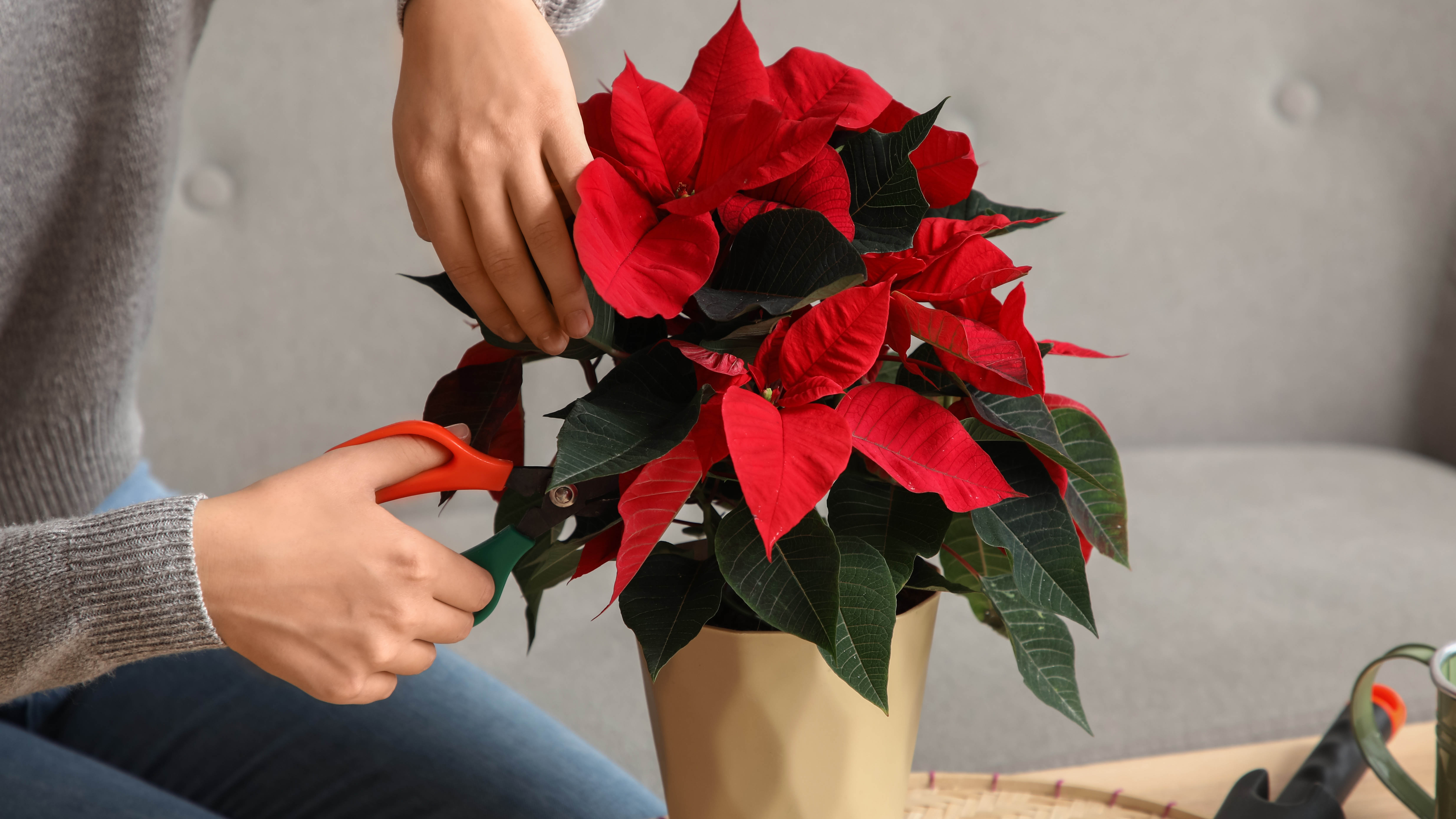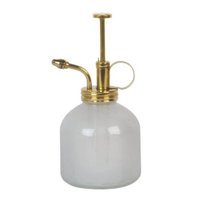What to do with a poinsettia after Christmas
Keep your poinsettia thriving year-round for more festive blooms in 2025

Poinsettias are beloved plants during the holiday season, thanks to their vibrantly hued foliage that comes in red, pink or white. Often mistaken for blooms, the colorful bracts surround tiny yellow buds during their peak flowering season, which occurs in December.
This makes for a very attractive plant during a time when most others are lying dormant, but it can lead people to assume that they’re only good for Christmas. As a result, it’s quite common to throw out the plants once the holidays are finished — but you don’t have to.
After the flowering period is over, poinsettias will begin to drop their colorful foliage and may look rather sad. It is easy to think that your poinsettia is dying when all that’s left are a few mostly bare stalks. However, the poinsettia is a perennial that will bloom again next year, if given the appropriate care. With some dedicated tending, your plant will soon refresh itself with vivid green bracts in the spring and summer. In this way, your Christmas display can easily become a year-round source of joy and life.
It’s important to note that getting the poinsettia to bloom and turn that signature red and white again can be a challenge. However, there’s no reason not to enjoy its regular foliage throughout the year – and you may be rewarded with that swathe of red during Christmas 2025 after all.
Immediate Post-Blooming Care

Once Christmas is over, you’ll notice your poinsettia looking a little worse for wear. It may drop some of its leaves, the yellow flower buds will blacken and dry up, and you might be left with a somewhat bare collection of stalks. Don’t worry: This is a natural part of the plant’s life cycle and there are still healthy roots and stems in place. You may want to lightly fertilize the plant, to replenish the nutrients that it spent during the blooming period. You can also prune away some of the dying growth at this time.
To protect these living parts and keep the poinsettia in good shape for spring growth, it’s important to keep watering your plant — but not too much. Since the poinsettia is native to warm-weather Mexico, it prefers dryer conditions and this period of dormancy means that the plant needs less water to survive. Remove any decorations or wrappings from the plant base, so that the planter can drain fully and keep the roots damp but not soaked. Wait to water until the top of the soil is dry to the touch.
It’s important to keep watering your plant — but not too much
In terms of temperature, poinsettias also prefer warmer conditions and so it’s important to keep the plant in an area that’s consistently between 65 and 75 degrees Fahrenheit. While you may choose to move the plant outdoors during the spring and summer, don’t do this prematurely as the colder weather outside may shock the plant and cause its leaves to yellow. A humid environment is also preferred, so you might want to place the plant on a pebble tray or near a humidifier. Alternatively, you can mist the plant for extra moisture.
Sign up to get the BEST of Tom's Guide direct to your inbox.
Get instant access to breaking news, the hottest reviews, great deals and helpful tips.
Since the plant is recovering ahead of the spring, it does not need as much light as other times of the year. However, you should still place the planter so that it receives roughly 6 hours of indirect, bright light. A south or west-facing window is ideal, especially since the days are shorter and light is weaker during these winter months.
A water mister is a piece of essential kit for every indoor gardener. Holding 8oz of water, this mister provides the ideal spray for humidity-loving plants and can also be used for starting seeds. Available in white, black, matt black and gold, you won't be hiding this away in your utility cupboard.
Spring and Summer Care

In April, the warmer temperatures mean that you may want to move your poinsettia to an outdoor location. Wait until the nighttime temperatures are no lower than 50 degrees Fahrenheit, which may vary depending on where you live. First choose a spot that is shady and experiences indirect light, so that the plant can adjust to the outdoor environment. After a few weeks, you can move the poinsettia to a sunnier spot.
If the plant has grown leggy over the winter, now is a good moment to prune back the stalks to roughly 5-6 inches in length. When the new growth begins to emerge, this is the signal to begin fertilizing the soil on a regular basis. Remember that the foliage will be green in color, not the distinct red, pink or white of the holiday season. As the plant grows, you may want to repot it into a larger planter, so that the roots can dig down deeper.
You may want to repot it into a larger planter so that the roots can dig down deeper
Poinsettias enjoy warm temperatures and lots of sunlight during the growing season, so make sure that they are either in a bright location outdoors or in a window indoors. Increase your watering slightly to accommodate the greater water evaporation that occurs in warmer weather, but be careful not to overwater. You might be tempted to prune the plant further as needed and this is okay to do – just make sure to stop pruning from the beginning of September if you want to encourage winter blooming.
Winter Blooming

Poinsettias can be very attractive with just their green foliage, so you can maintain your current care schedule and still enjoy it year-round. Just make sure to bring the plant indoors once the nighttime temperatures drop to below 50 degrees Fahrenheit and treat it as normal. However, if you want to see red or white bracts again in the 2025 holiday season, then you’ll need to make the following adjustments to your care routine.
Starting in October, you must ensure your poinsettia receives 14 hours of darkness every day
Starting in October, you must ensure your poinsettia receives 14 hours of darkness every day. You will then need to move the pot to a sunny location so that it receives an additional 6-8 hours of bright sunlight, every 24 hour period. You must maintain this schedule for the next few weeks, in order to prompt the plant’s signature colored foliage.
By late November, these colors should have appeared and you should be able to stop submerging it in darkness. For the rest of the holiday season, you can keep the poinsettia in a warm and bright location.
More from Tom's Guide
Madeleine Streets is a writer and content manager based in New York City. She covers an eclectic mix of lifestyle, technology, finance and health and has been published in Tom's Guide, Women's Wear Daily, SELF, Observer, Footwear News and others. Originally from London, Madeleine has a penchant for tea, baking and moody weather. When she’s not writing, you can find her exploring the city’s bookstores, hunting down new restaurants, fostering cats and cheering on Arsenal FC.


